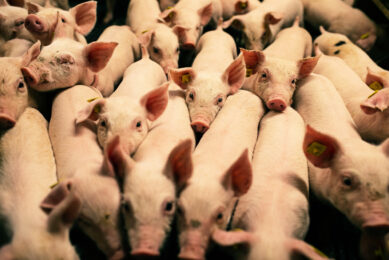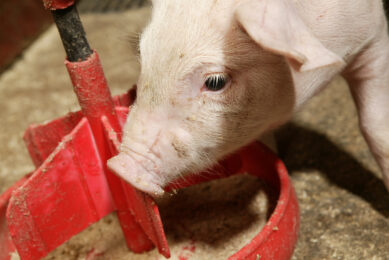Why extended research matters with pigs

No early work on small pigs is complete until the slaughter results are in. Unlike what is usually done, that moral should be kept high when doing pig research, writes management expert John Gadd.
I find it difficult to write this piece. It will upset some worthy researchers whom I have long held in high esteem, and still do. The textbooks hardly ever mention what financial benefit (to the producer) the physical results of their worthy research are likely to achieve? Physical aspects being things such as better food conversion and daily gain, more weaners per sow per year, lower mortality and better health, etc.
Researchers avoid putting financial benefits in
There have been masses of encouraging work in these areas, but researchers have avoided giving any likely financial benefits to the producer from their efforts. “Not our job,” say the scientists. “Ours is to identify any performance improvement from a statistical standpoint. Anyway, the financial situation is very different from industry to industry which must make the idea impracticable.”
I have to disagree from two standpoints.
Econometrics
Also known as the measurement of cost-effectiveness. First, the researcher’s career in the end depends on the fruits of their work if too many findings are not economic, then their effort is negated. There are examples where even a good result can be too expensive to adopt, so econometrics are always important.
The objection to the ‘financial differences between nations’ argument can be overcome by the researcher citing a nominal cost/benefit equation at the end of each project report along the lines of ‘what might this mean in dollars and cents?’ (or whatever) so that the producer can substitute/insert the financial costs and benefits of his choosing from his own industry (or even from his own farm’s circumstances) and so arrive at a value for money decision.
Comparing a wide variety of research
Ideally, if all research work carries with it a nominal cost/benefit equation, based on the actual physical result, on which the producer can impose his own circumstances, the many positive results from a wide variety of research can be compared with one another to arrive at the best use of the producer’s capital.
I see this on at least half of my on-farm consultancy work, which in the end involves increasing the client’s return or minimising his loss. I am paid to get things physically better, sure, but also to achieve it through the best and most likely economic route – that is by assessing the likely cost-effectiveness from each piece of research.
This leads me on to my second point
This approach, from hard experience over many years and where pigs are concerned involves the major importance of the early growth period. Research have done sterling work in this regards in terms of piglet nutrition and it’s environment. But too often the trial stops there – say at weaning or into the nursery a little later on. Experience tells me that any economic advantage at these early ages are doubled, and with good subsequent management can even be trebled by slaughter weight (see Table 1).
The majority of us sell pigs at slaughter weight, not at weaning or at 30 kg. We first recognised this when working on new varieties of digestively-friendly creep feeds. To make them digestively-friendly, and when consumed enthusiastically ad lib as they were, these new creep feeds had to be twice, often three times more expensive per tonne.
A frightening cost per tonne
This put buyers right off. In terms of weaner value the extra 0.5 kg or so more weight did not seem in the buyers eyes to be worth the frightening cost per tonne from that which they were already using. But when we carried the trials on to slaughter weight the extra income easily overtopped the apparent early feed cost.
Table 1 provides a typical cost-benefit scenario since repeated many times with different 21st century creep feed formulas.
Prohibitively expensive pig research?
“We’re not fools,” the researchers reply. “We appreciate this but the cost of continuing the research under controlled conditions is quite prohibitively expensive.” My response is that strictly controlled subsequent conditions are not needed to prove the economics. So just farm the subsequent work out on to real farms where both groups are raised to slaughter under identical conditions. Then the results of the baby pig research really prove themselves.
Econometrics matter!











